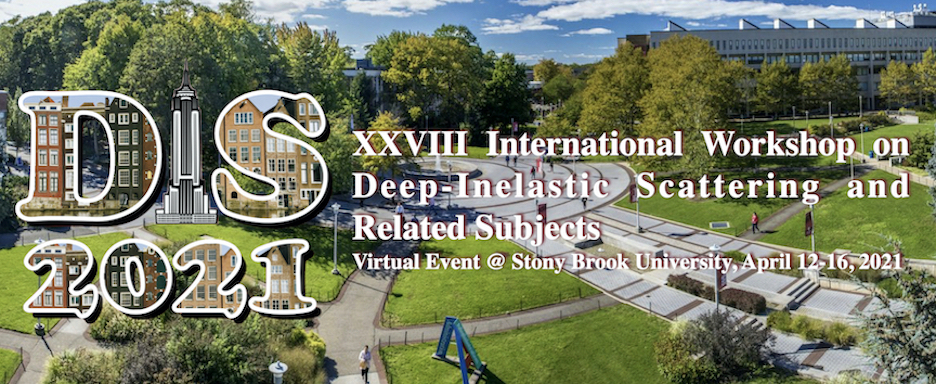Speaker
Description
We present, the results of a phenomenology analysis at Next-to-Leading accuracy for the Mueller-Tang jet process, where two jets separated by a large rapidity interval and no other radiation are observed. This process is of high interest, as one might be able to investigate Balitsky-Fadin-Kuraev-Lipatov (BFKL) dynamics which emerges in the high-energy limit of quantum chromodynamics (QCD).
Two are the key ingredients in the BFKL framework. The Gluon-Green 4-point function (GGF) a, process independent, universal object that is exchanged in the collision and the Impact-Factors (IF) which couple the GGF with the external probes.
The novelty in this study consists in including in the analysis also the NLO corrections of the IFs. Aside from the expected complications due to the NLO IF enriched topology, a more puzzling problem emerged during this study. The precise observable definition enforced also at experimental level preclude a construction featuring the high-energy factorization, namely the separation of IF and GGF so that all the BFKL resummed enhancing factors can be cast into the GGF alone.
On the experimental side, fair agreement has been found between BFKL predictions and Tevatron data. The CMS experiment has presented results at collision energies of 7 and 13 TeV. However, no clear-cut evidence of the BFKL dynamics can be claimed yet. To confirm and distinguish the role of the underling BFKL dynamics a complete analysis at NLO is needed. In this talk, we present progress toward such a task. We recall some of the difficulties encountered along the way, with emphasis on the mentioned breaking of the high-energy factorization and compare the predictions to the CMS findings at 13 TeV.

